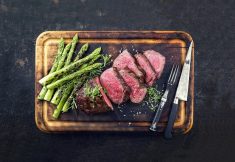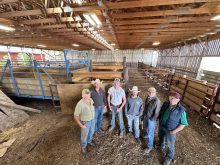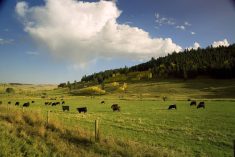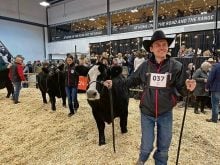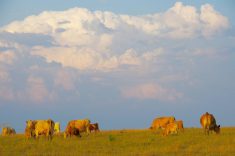When winter sets in and all my water systems freeze up, what do I do for water? Well, I don’t chop ice, that’s for sure. That sounds too much like labour to me. And of course the risk of losing cattle through the ice seems to deter the practice here at Greener Pastures. I have heard of too many stories of dugout disasters to try that. All my water sources are either fenced off or the cattle are not allowed access to them when the ice forms.
Read Also
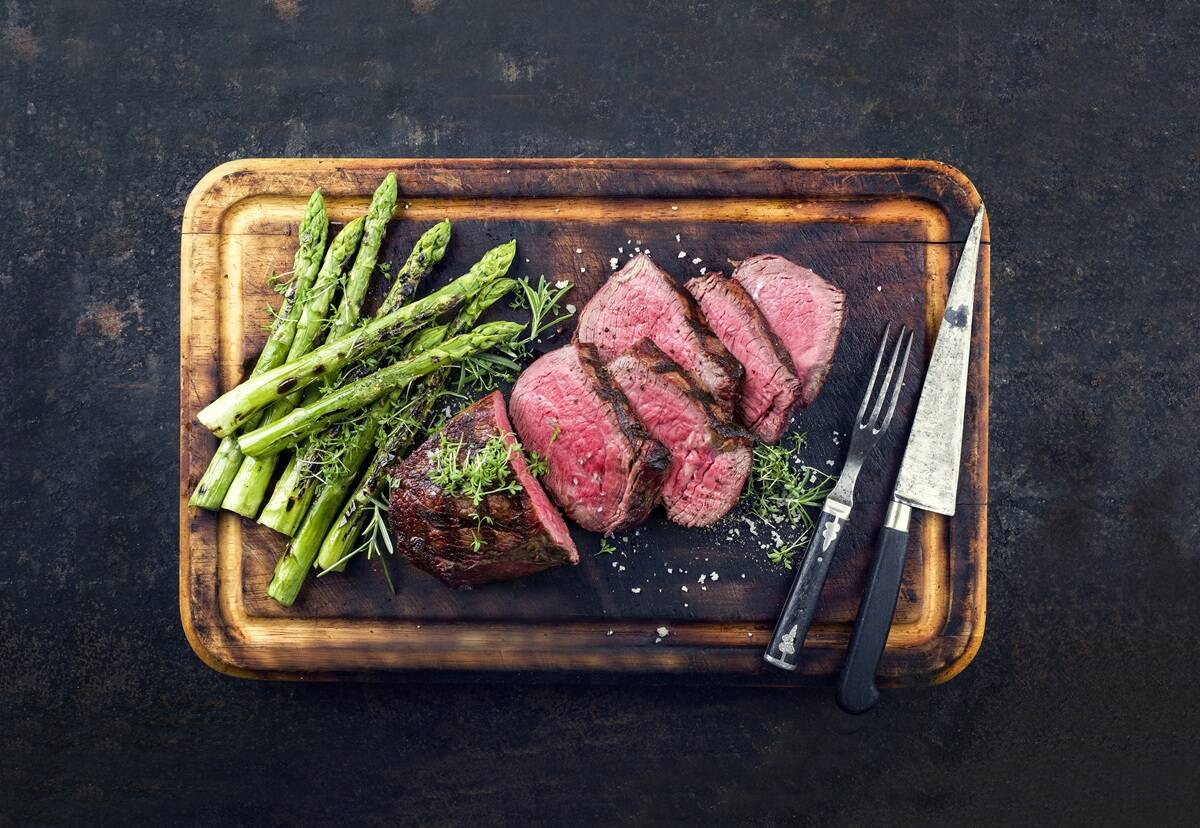
Building demand together: The impact of Canada’s beef import levy
The beef import levy has become a central tool for ensuring balance in Canada’s beef industry
My first choice for winter water is snow: pretty simple, cheap and reliable. If there is snow on the ground, or at least some still in the bush, I have had many years of letting my cattle lick snow as a water source. Of course I am referring to dry cows licking snow, but as I write this, I have 374 bred heifers dormant-season grazing on about an inch of crusty snow. If you are thinking snow will work with cow-calf pairs, how do you think nature weans its off- spring in the wild?
If I am dormant-season grazing on stockpiled forages or swath grazing, I feel that the animals are consuming much of their water requirements just by grazing. Each mouthful of forage also gives them a fair bit of snow. In addition to this, the forage is pretty high in moisture content. If they can “graze” most of their moisture, it does not take much time to “lick” the rest of their requirements.
I have heard of “good” snow or “bad” snow, “dry” snow or “wet” snow. Here at Greener Pastures, I have never done any research studies on this but I have had all sorts of snow types. I even had one year where the snow had all melted away, and you could see a trail to and from the bush where the animals would go to “chew on ice.” They still did just fine. Of course, I do not recommend pushing them too much when the snow gets that hard. You have to watch your cattle. Some cattle can handle it, some can’t. All cattle are not created equal, and I am not referring to any specific breed, as I have found, there is just as much variation within breeds as there is between the breeds.
If I am bale grazing, snow still works, but the animals do not get as much of their moisture from grazing as the hay is quite dry and they are not getting mouthfuls of snow with each bite. In this situation, the quality of snow makes a difference. With poor snow, I recommend finding a water source while bale grazing.
If I have no snow then I need to come up with an actual water system. It needs to be inexpensive and reliable. I do have some rental lands that come with a typical heated water bowl and quite often I can walk the cattle to one of these. If not, my first choice is a continuous flow system. It is cheaper to pump water than it is to heat it.
Now I have seen many different styles of continuous flow, from a well, a dugout, a creek or a dam where the water is pumped to a trough, a tire or a tank. As long as it works, great!

Mine comes from a well with a pressure system and flows to a rock picker! Yes, I also use one of my solar powered rock pickers as a winter waterer, but without the solar power. As you can see from the picture, I simply use a garden hose controlled with a float valve to feed the trough. It does have an overflow drain on the far side away from the cattle.
The trick is a very small hole drilled in the elbow just before the float valve. This not only allows the water in the hose to flow continuously, but it also stirs the trough. When the animals are drinking, the float opens and you have high volume when you need it. When the cattle are not drinking, you get low volume, and high pressure through the hole that stirs the water. The picture was taken at -35 C. Note there is no ice on the water at all. I would recommend protecting the float valve as I have had the plastic float broken off by the cattle. As a bonus, the overflow drains out the back side of the rock picker and down the hill which creates a great toboggan slide for my kids. A round saucer sure goes fast down an ice hill!
When I had a smaller herd, I modified one of my summer solar powered rock pickers into a winter water system by replacing the float valve with a motion sensor. I say a smaller herd because with the limited sunlight during our winter this system failed the reliability test at Greener Pastures with a larger herd. When I’m setting this up I cut a hole in the ice, slide the pump into the water and insulate the hole with straw. You need to keep the water from freezing where the water line enters the water. The other trick is to make sure the water line completely drains each time the pump shuts off. You can’t have any dips in the line between the trough and the pump. This system turns on with the motion sensor when the cattle come to drink, when they leave it turns off and then the water drains out of the rock picker through the drain hole. I recommend way more solar panels and batteries than you think you might need. Our days are pretty short here at Busby.
One more note: I am quite aware that there are other winter systems out there that I have not mentioned. If your system is inexpensive and reliable, good for you. These are just a few of the systems used here at Greener Pastures. Good luck and happy grazing this winter.




